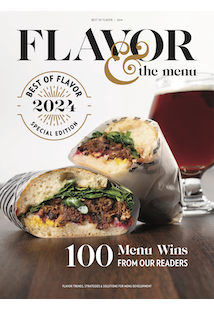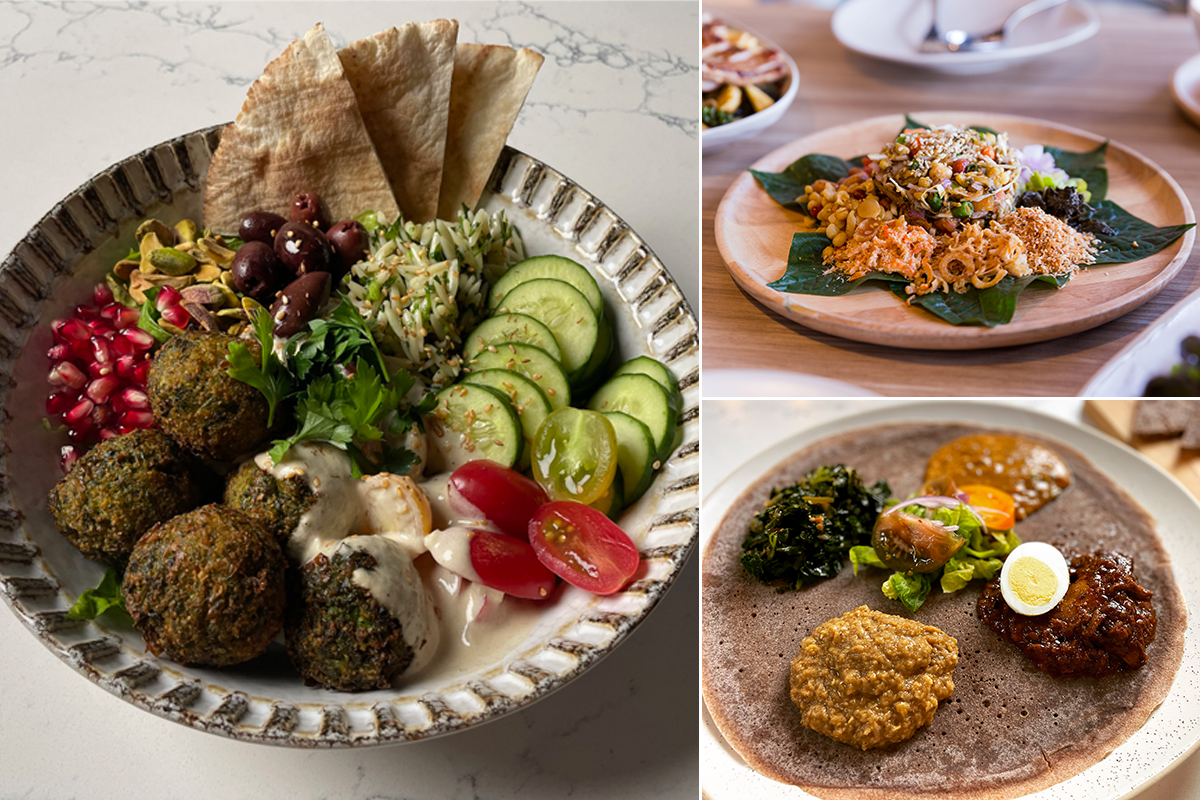
Transforming Global Dishes Into Hearty Bowls
How to deconstruct and reassemble flavor-forward classics
Transforming Global Dishes Into Hearty Bowls
How to deconstruct and reassemble flavor-forward classics
By Rebecca Peizer
July 17, 2024
By Rebecca Peizer
July 17, 2024
An all-in-one meal option, bowls can play across multiple dayparts and cuisines, thanks to their versatility and health-conscious vibes. As one of the most customizable items on a menu, they are a great vehicle for featuring a variety of proteins—from poultry and red meat to seafood and vegetarian offerings—as either the center of the plate or a garnish. These proteins not only add a hint of savory flavor and a rich mouthfeel, they also create a filling dish that, while healthy, is anything but light. Let’s take a look at a few global dishes that offer a flavor blueprint for new bowl and salad builds.
Egg Roll Bowl
Larb is a popular salad option in Southeast Asia, comprising spiced ground meat (usually chicken, duck, turkey, beef or pork), lemongrass, fresh herbs, garlic and lime juice. Often served with lettuce wraps, the classic dish also offers inspiration for deconstructing an egg roll and reassembling it as a bowl. This re-creation features fresh and cooked greens, red cabbage, carrots and the other requisite veggies, as well as meat seasoned in garlic, ginger, soy sauce and sesame oil. A garnish of fried egg roll skins brings extra crunch, ensuring every bite is reminiscent of the traditional roll.
Mediterranean Falafel Bowl
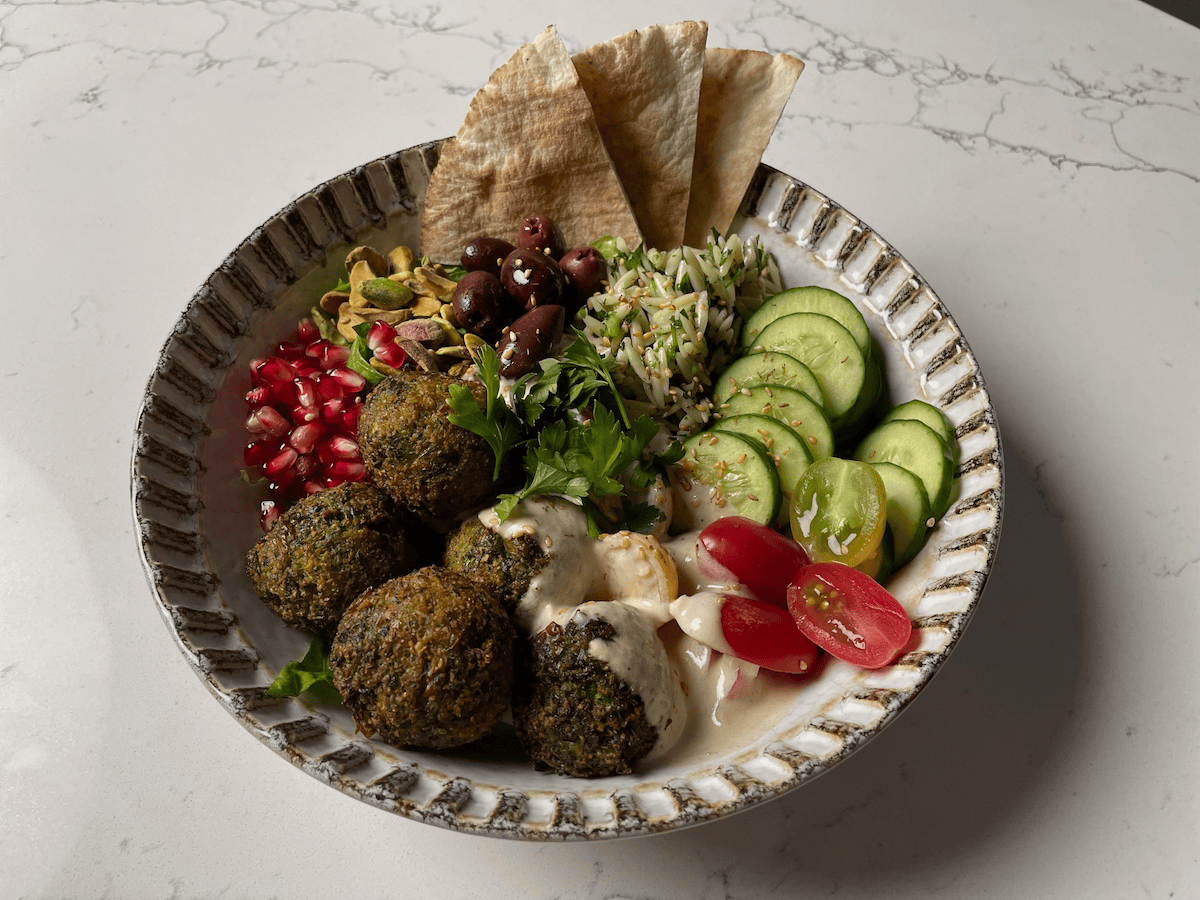 Photo Credit: Rebecca Peizer for the Culinary Institute of America
Photo Credit: Rebecca Peizer for the Culinary Institute of America Falafel balls can be the star of a Mediterranean salad, or they can be shrunk into small “croutons,” and cede the center-of-bowl spot to kebabs.
Falafel appears on mezze platters and in pita sandwiches so often that it’s easy to forget this versatile fritter, made of chickpeas or fava beans, can serve as a craveable, protein-packed anchor. Boost the visual appeal and textural nuance of a falafel bowl through a variety of fresh produce. In addition to tried-and-true ingredients like fresh tomatoes, cucumbers and Kalamata olives, try less common toppings like pomegranate seeds, pine nuts and haloumi. A base of orzo and a side of pita add heft to the overall dish. Consider stuffing the center of the falafel with grapes for a burst of flavor, or add kebabs and convert the typical falafel balls into bite-size croutons. Finish with sumac-spiked tahini dressing.
Burmese Tea Leaf Salad
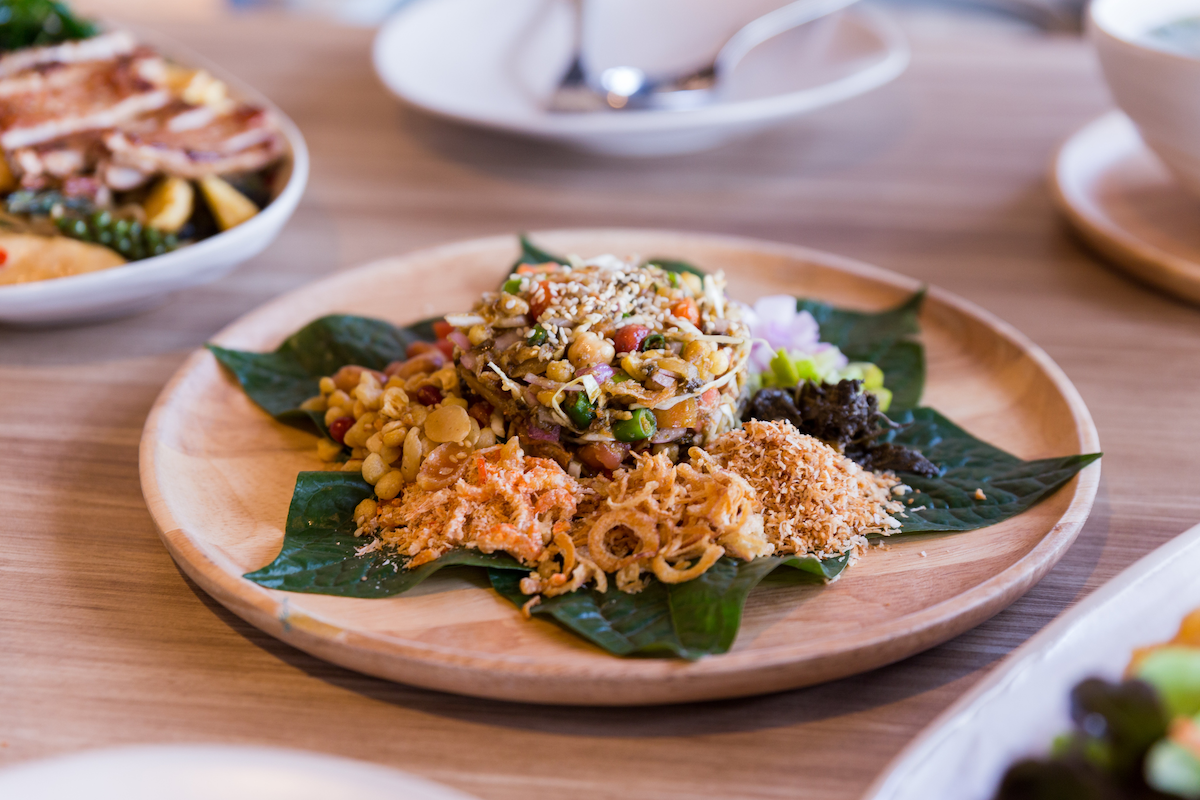
Already a filling dish in its traditional state, Burmese tea leaf salad becomes even heartier with the addition of an animal protein.
Certain bowls offer an interactive experience in which the diner chooses just how much of each ingredient they wish to taste in each bite. Burmese Tea Leaf Salad provides this experiential element, with its various components including fermented tea leaves, tiny, dried shrimp, shredded cabbage, chopped tomatoes and a blend of toasted pulses, grains and nuts. While the diminutive shrimp add loads of flavor and umami notes, they aren’t the most filling protein. Swap in giant tiger shrimp for more substance and deep-fry them to maintain the dish’s signature crunch.
Kona Turkey Bowl
Hawaiian cuisine boasts one of the most famous and recognizable bowl dishes of all: the poke bowl. While tuna, octopus and other seafood account for about 95 percent of a traditional Hawaiian-themed bowl, other staple ingredients, such as pineapple, macadamia nuts, seaweed and ginger, can make flavorful additions. For a mainland twist on the classic formula, try substituting in mild and lean proteins like turkey breast. Chargrilling the turkey with a sweet soy glaze adds depth of flavor and a slight bitterness, balancing the sweetness of pineapple and other tropical ingredients. Double down on the protein content with a base blend of quinoa and forbidden black rice, and finish the dish with fatty, satisfying toppers like avocado, macadamia nuts and sesame seeds, plus seaweed for a burst of salinity.
Beyaynetu Basga
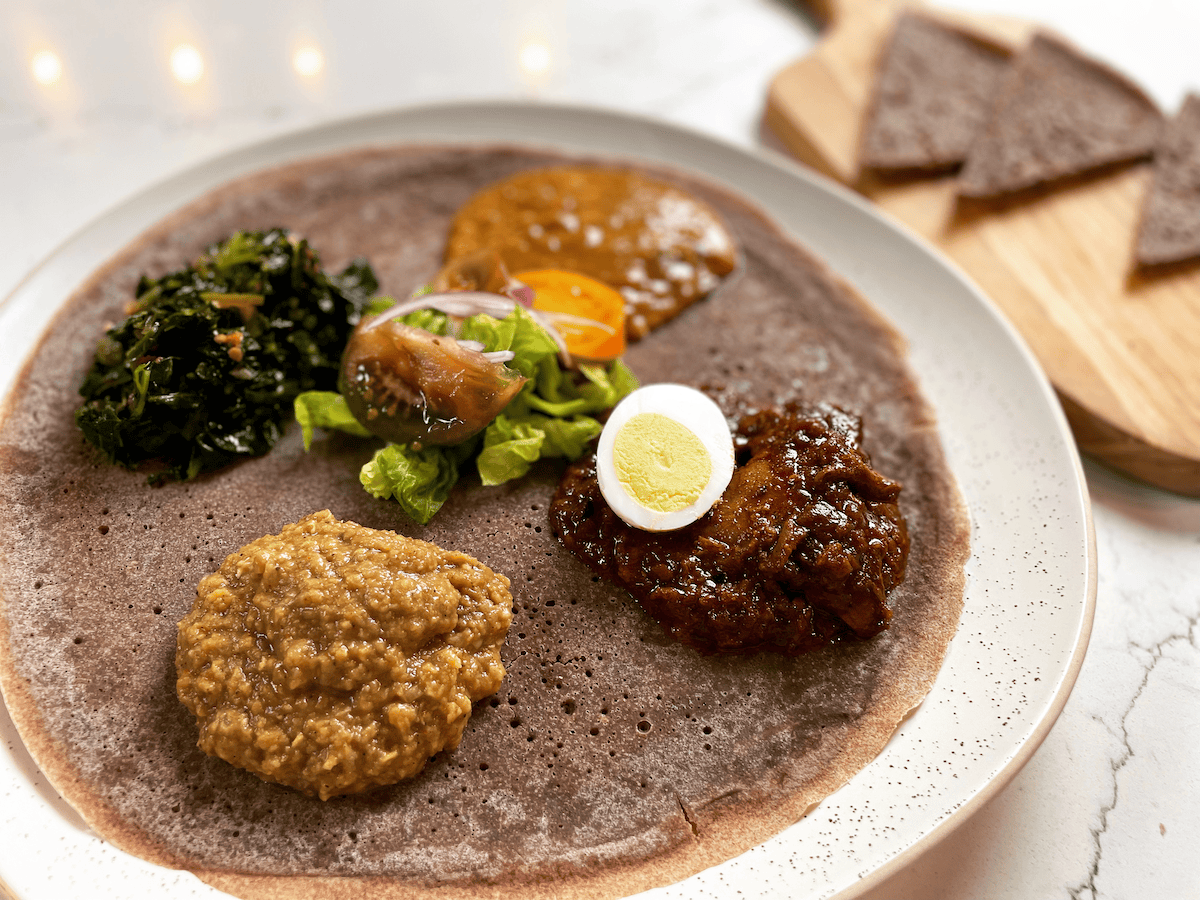
Combination platters, like Ethiopia’s beyaynetu basga, can be converted into bowls by changing the cooking technique and shaping the injera base into a “taco” salad shell.
Technically, beyaynetu basga is neither a bowl nor a salad, but rather a hearty combination plate that embodies the flavors of Ethiopian cuisine. Dollops of various dishes are artfully arranged atop a base of injera, a fermented flatbread. These dishes feature a combination of meats, pulses and vegetables, such as doro wot (chicken stewed in a spiced, sweet-and-savory sauce and served with boiled egg), gomen besiga (spicy collards cooked with lamb) and misir wot (an aromatic red lentil stew). A fresh helping of timatim (Ethiopian tomato salad) lightens up the overall platter and offers inspiration for a bowl conversion. Shred spiced—not stewed—chicken and top it with a sunny-side-up egg. As a base, fry injera bread and shape it into a “taco” salad shell; toss in massaged kale, pickled lentils and timatim for nuanced flavor.
Bowls and dense salads have become a regular and ever-changing addition to many menus over the last few years due to their focus on nutrient density, visual appeal and ease of customization. These dishes boast the ability to showcase the trendiest cuisines, ingredients and cooking techniques while also reimagining retro favorites for a new generation. In short, bowls invite menu developers to think outside the box—and inside the bowl.
About the Author
![]() Chef Rebecca Peizer is the owner of the culinary consultancy All Things Culinary LLC, as well as a professor, consulting partner, digital media talent and conference stage manager for the Culinary Institute of America at Copia in Napa Valley, Calif. She has worked for many esteemed wineries, restaurants, resorts and culinary schools in New York, Napa Valley and Las Vegas. She implemented the nation’s first farm-to-table culinary program at the Culinary School of the Rockies in Boulder, Colo., and does pro bono work for the Salvation Army and Gray Haven Health & Wellness. Rebecca is an active forager and herbalist and has earned certifications in cheesemaking, permaculture design, professional wine studies, CEC and CHE.
Chef Rebecca Peizer is the owner of the culinary consultancy All Things Culinary LLC, as well as a professor, consulting partner, digital media talent and conference stage manager for the Culinary Institute of America at Copia in Napa Valley, Calif. She has worked for many esteemed wineries, restaurants, resorts and culinary schools in New York, Napa Valley and Las Vegas. She implemented the nation’s first farm-to-table culinary program at the Culinary School of the Rockies in Boulder, Colo., and does pro bono work for the Salvation Army and Gray Haven Health & Wellness. Rebecca is an active forager and herbalist and has earned certifications in cheesemaking, permaculture design, professional wine studies, CEC and CHE.

